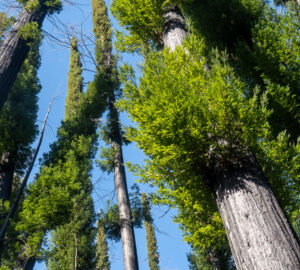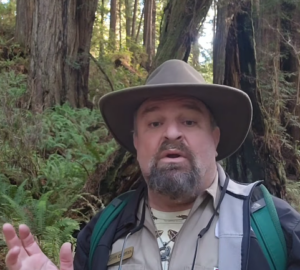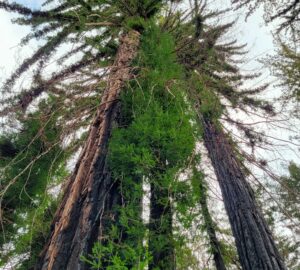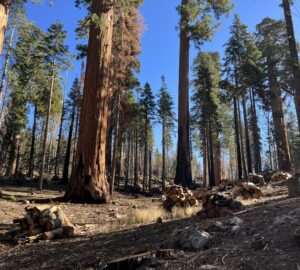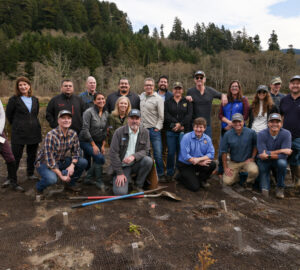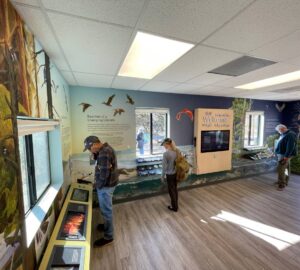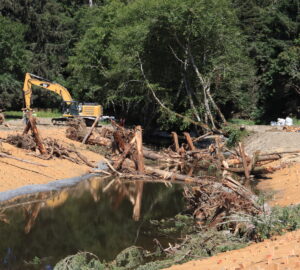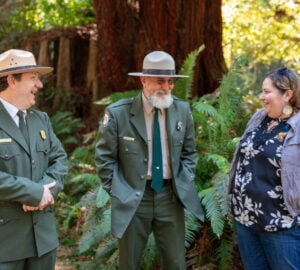Our active stewardship and restoration at San Vicente are more important than ever as we gear up for the coming fire season.
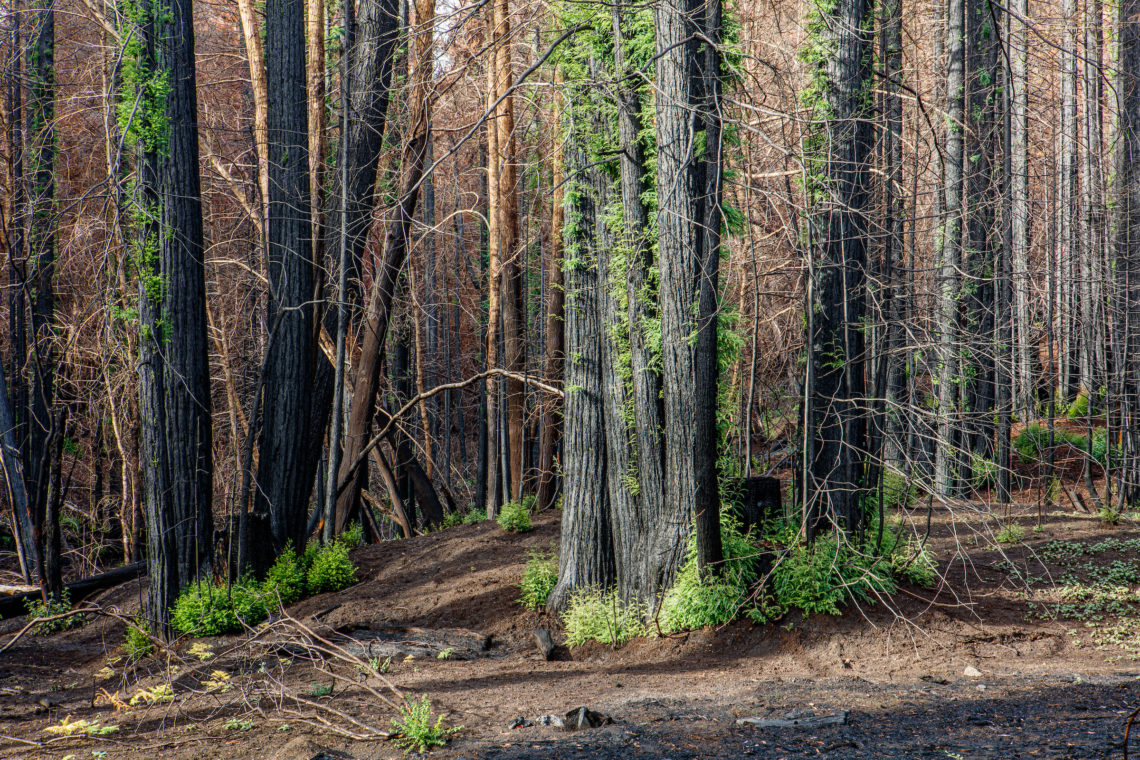
San Vicente Redwoods is almost like my second home these days. Ever since the 86,500-acre CZU Lightning Complex fire burned through San Vicente in August 2020, I’ve been out there with our partners and crews working to assess the fire damage and figure out our path forward.
Save the Redwoods League, Peninsula Open Space Trust (POST), and Sempervirens Fund protected this property in the Santa Cruz Mountains in 2011, during my early years at the League. I’ve probably clocked several months of my lifetime walking this forest, which is within the ancestral lands of the Awaswas people and the Amah Mutsun Tribal Band. Many of my field days are spent monitoring the easement and working forest, collecting plot data, and marking trees for restoration thinning to promote fire resilience and the return of old-growth characteristics to recovering clear-cut areas. The relic old-growth redwoods scattered throughout serve as hallmarks to the vision for our long-term restoration goals.
Restoring a Landscape
Owned by POST and Sempervirens Fund, 8,532-acre San Vicente is the largest privately held property between Silicon Valley and the Pacific Ocean and connects 27,500 acres of contiguous protected woodland. Save the Redwoods League holds a conservation easement that permanently protects the land from subdivision and development, while providing the opportunity for restoration and scientific research, as well as sustainable timber harvesting on portions of the property. The League directs restoration projects, monitors timber harvests, and ensures the protection of old-growth redwoods and important habitats.
We are also working with POST, Sempervirens, and the Land Trust of Santa Cruz County to provide public access to approximately 38 miles of trails for millions of people in the Bay Area and surrounding communities. Some of these trails will feature spectacular views of the California coastline and will give visitors a look at a forest recovering from clearcutting and wildfire.
San Vicente is home to a variety of rare, threatened, and endangered animals and plants, including the California red-legged frog, coho salmon, steelhead trout, Shreve and Oracle oaks, and Anderson’s manzanita. Many of California’s signature mammals live here, such as black-tailed deer, bobcats, coyotes, and mountain lions. The property also provides drinking water for Davenport and Santa Cruz. Thus, San Vicente is a critical place on so many levels; its ecological health impacts the entire region.
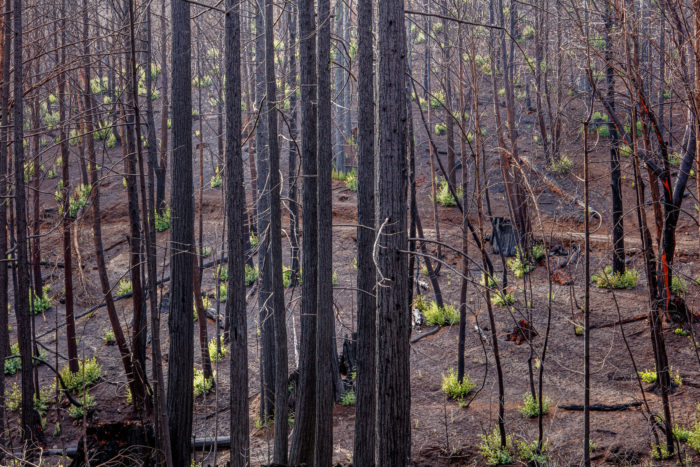
After the Fire
Roughly half of the forest in San Vicente burned very hot in the CZU Lightning Complex last year, causing full crown scorch on most of the trees and killing most of the ancient Douglas fir and many other hardwood trees. The resilient redwoods will recover—many of them are already resprouting at the base and in the canopy. We have even seen native plants that haven’t grown in this forest for a long time emerging from the ash, the dormant seeds now having been germinated by the fire.
However, the landscape has been altered in ways we could not have anticipated. Nadia Hamey, lead forester at San Vicente, called the fire’s impacts a hard reset. But it appears that the work we’ve done to reduce the density of trees in fire-prone areas and create shaded fuel breaks may have helped to reduce some fire severity during the CZU Lightning Complex. We look forward to quantifying the impacts of that work with continued scientific research. And in the meantime, we need to continue doing more of it.
This past fall and winter, we replaced burned culverts to address potential erosion issues and hillside failures. As spring approached, we worked with POST and the Amah Mutsun Land Trust to plant 5,500 coast redwood and Douglas fir seedlings in the Deadman Gulch Restoration Reserve and Working Forest unit. Caring for this property includes regular site monitoring to clear plugged culverts and fallen trees on the road. These activities are just the beginning. We’re actively refining our restoration vision to incorporate the impacts of the fire and guide our current restoration thinning and prescribed burning projects so the property will better handle any future wildfire.
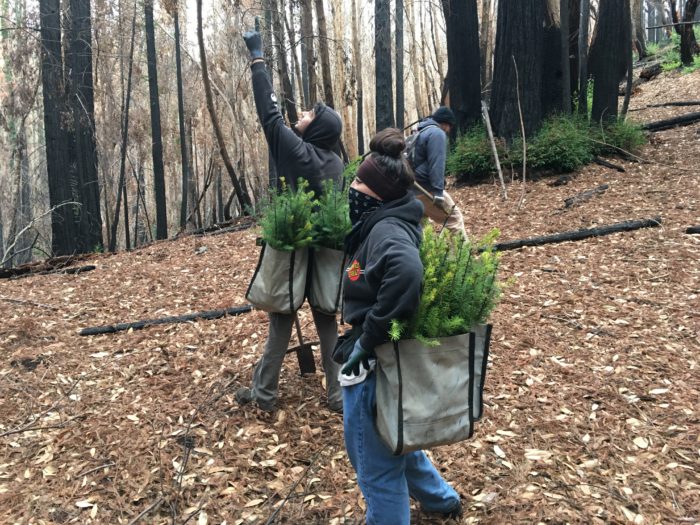
Forging Ahead
This year’s fire season will be upon us sooner than we can anticipate. If the patterns hold true, this one could be just as severe as, if not more than, the last. Active stewardship and restoration at San Vicente and all protected lands are critical right now.
The silver lining of every tragedy like the CZU Lightning Complex fire is the people’s call to action. Because of what we endured last year, our legislators and the public at large are more educated and aware than ever before of the imminent need for wildfire readiness and funding to support it. Policymaking discussions in Sacramento and support at the local level to address fire safety give me hope that California will develop a long-term vision for the wildland–urban interface. We are part of these lands, and it’s our responsibility to care for them. It‘s not a matter of if California’s redwood forests will burn, but when. With our stewardship, and with the traditional ecological knowledge of the original stewards, California tribal communities, we can determine how.

